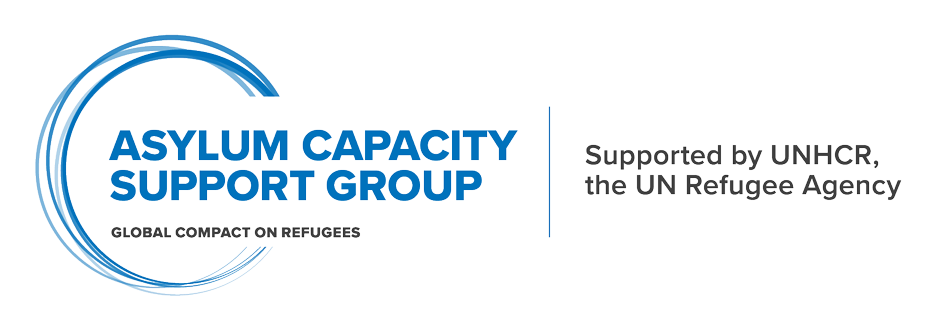
Brazil. Registering Venezuelan asylum-seekers in Boa Vista ©UNHCR/Allana Ferreira
Snapshot
Entities sharing this good practice: National Committee for Refugees (Conare) within the Ministry of Justice and Public Security
Submitted by: Bernardo de Almeida Tannuri Laferte, Conare General-Coordinator together with Federico Martinez and Christina Asencio, UNHCR Brazil
Key stakeholders: National Committee for Refugees / Federal Police, UNHCR Brazil
Visit their website:https://www.justica.gov.br/seus-direitos/refugio/conare and https://www.acnur.org
Sisconare[1] is an online digital platform used by Brazil’s National Committee for Refugees (Conare), as a registration and case management system. It is used by Conare and the Federal Police, to enable asylum-seekers to register their information, receive notifications, monitor the progress of their applications, and keep their personal data updated.
Moreover, the system has been extremely useful for re-registration and validation of the pending asylum claims. These asylum-seekers were requested to register in Sisconare at the time of renewing their provisional documentation (called the Refugee Protocol). The renewal of the Refuge Protocol was used as a way of making asylum-seekers register their data in Sisconare.
[1] The System of the National Committee for Refugees (Sisconare)
Registration process under Sisconare
To access for the first time (see video), asylum-seekers must have a valid email address and fill in some basic information. The system then sends them an email by means of which they generate the access code.
- Once they have the access code, they can self-register online directly on Sisconare by completing a 13-page Portuguese pre-registration form, which is accessed through a website (see video). Asylum-seekers re-registering in Sisconare only need to complete a 4-page Portuguese re-registration form.
- Once self-registered, asylum-seekers must make an appointment with the Federal Police for the validation of the information in Sisconare, and to register their biometric data and take a photo. If they are at a point of entry or a relocation and triage post (PITRIG), they can apply immediately.
- The Federal Police verify the information in Sisconare, through the processing number of the asylum-seeker, reviewing the data, taking photographs and fingerprints. Once validated, the Refuge Protocol is issued with its corresponding number.
- In addition, asylum-seekers should obtain the Provisional Document of the National Registry of Migration (DPRNM), which is issued by the Federal Police. This document is complementary to the Refuge Protocol and gives better access to basic rights in view of its greater acceptance in society.
- Once the registration is complete, the application can proceed to the next steps in the asylum procedure i.e interview, legal evaluation, decision, notification, appeal etc.
Activities
-On March 1, 2019, the pilot phase of Sisconare was launched.
-On June 14, 2019, Conare’s Normative Resolution No. 29 sets out the use of Sisconare as the application processing system.
-On September 15, 2019, Sisconare became the exclusive mechanism to request recognition of refugee status in Brazil.
-The Ministry of Justice and Public Security made informative videos on how to access the platform for the first time and apply for asylum, how to re-register and renew the Protocol, and how to include family members in the application (see video).
-At the beginning of 2021, the integration between Sisconare and Sismigra, the Federal Police system that generates the DPRNM, was completed. DPRNM was instituted by Decree No. 9,277, of February 5, 2018.With the integration between the systems, the document began to be issued on a large scale throughout the entire Brazilian territory, which the authorities presented as good practice at the meeting under the Quito Process.
Impact of the good practice
-Sisconare has enhanced the efficiency in the processing of applications for recognition of refugee status. It has helped in reducing the backlog of pending cases and reduced the time taken in different stages of the procedure such as in scheduling of interviews, the writing of legal evaluations, giving notifications, etc.
-The use of the platform also has advantages in terms of information security compared to the paper-based asylum application.
-For asylum-seekers, Sisconare has offered a more agile and easy way to formalize their claim for international protection, as well as offered them access to information about the processing of their claim, thus ensuring greater transparency to the process. For refugees, it is used as a tool to keep their data up to date and process different requirements, such as requests for family reunification, thus avoiding long waiting times to access different procedures.
-In addition, Sisconare assists in the prima facie recognition procedure of Venezuelan applicants (see good practice) by allowing data extraction based on specific criteria.
-The issuance of the provisional document DPRNM was of utmost importance for effective access to fundamental rights of asylum-seekers.
-Sisconare has allowed for the continuous registration of asylum-seekers and ensured access to the asylum procedure even throughout the pandemic. The good practice of conducting remote eligibility interviews by Conare, using the Microsoft Teams application, also minimized the difficulty in reaching asylum-seekers residing throughout the Brazilian territory.
Challenges
The lack of digital literacy and the difficulties in some regions of finding available support, for example civil society organizations, to help them in the self-registration process, posed a challenge.
The pandemic had no impact on the implementation of Sisconare. This reinforced the importance of having a tool that allows for self-registration.
Next steps
In addition to the registration component, some components of Sisconare are under development, such as an automated RSD interview appointment scheduled through Sisconare with an immediate notification to the asylum-seeker’s email; the possibility of having the interview and the legal assessment decision recorded in Sisconare; the notification of decision; and the complete appeal procedure through Sisconare.

Recent Comments